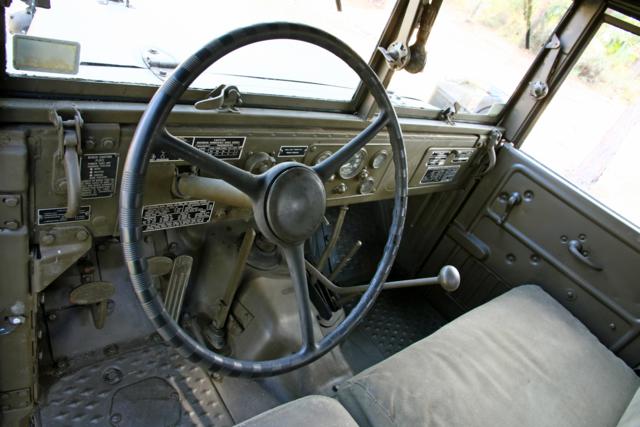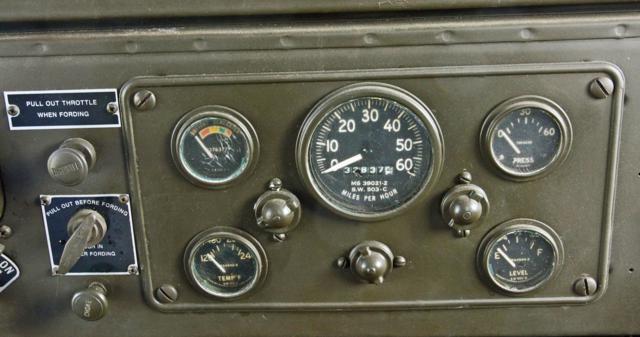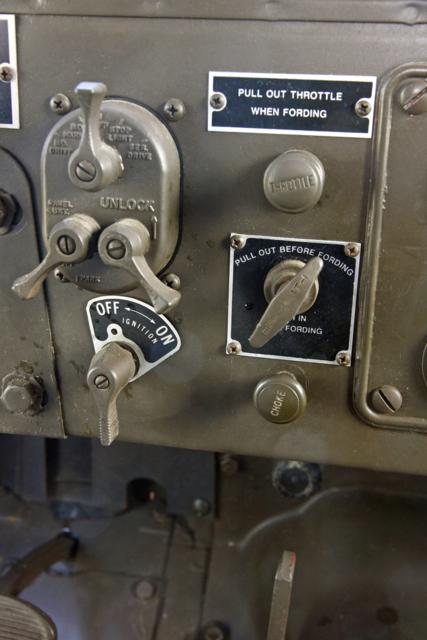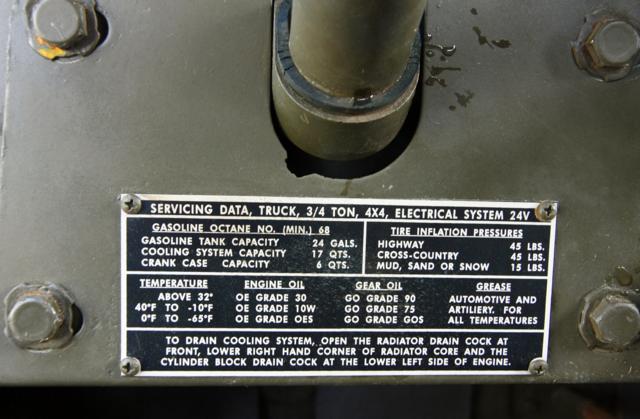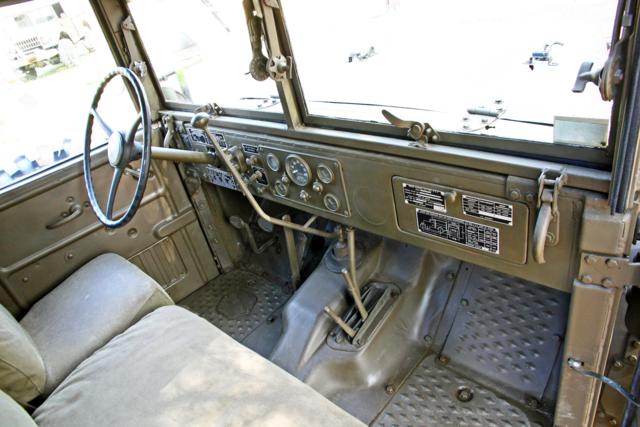Heavy Metal
Dodge’s rare M201B1 WWII military truck.
By Scott Longman Photos by Bill Erdman
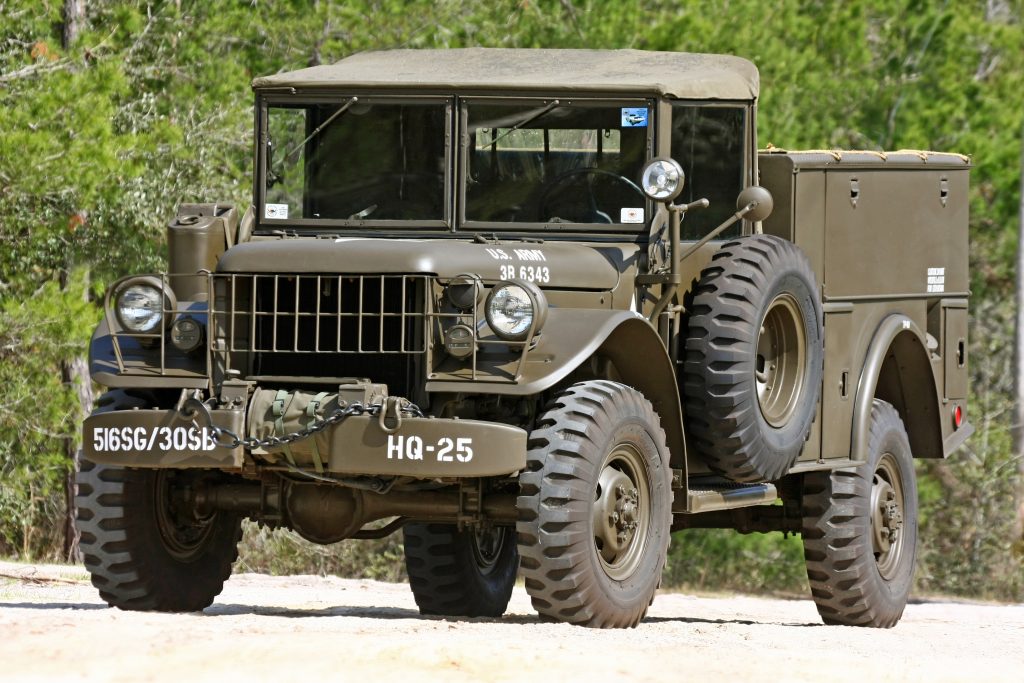
Only 519 ¾-ton M201B1 trucks of all model years were built by Dodge for the military. This one was produced in 1961. Jim Branson saw it on eBay and put in the minimum bid of $1500. There were no other bidders. The truck turned out to be junk, and Jim first figured to part it out. But since it was so rare he decided to go the resto route.
Remember Tonkas? We had the Jeep. Our buddy Doyle had the end-loader. But the best was when Simansky would come over, because he had the giant, yellow dump truck. That one looked incredibly tough, and better yet, you could actually get into it and do dangerous stuff. You folded up a rubber doormat, stuck it in the bed of the truck, then put your right knee on that. With both hands on the flange at the front of the bed, you could kick off with your left foot, sort of a skateboard with a coal mine elan. We had a steep hill, and halfway down, just before the alley, there was a buckled sidewalk square that angled up. A couple of good kicks at the top to get going, then gravity opened up the secondaries, with those big, knobby plastic wheels sounding like runaway Dremel tools, right up until the instant of going airborne. We eventually got good enough at it that we avoided faceplants on the far side, except for that time with Mrs. LaRosa. She unexpectedly popped out of the alley in her Buick when Simansky was already going hell-for-vinyl. He conked his grape into the quarter panel like a cannonball off Old Ironsides. Of course, that event simply made the dump truck even more popular, even with Simansky himself. Anyway, point is, the truck you see here is the ultimate Tonka. Here’s why.
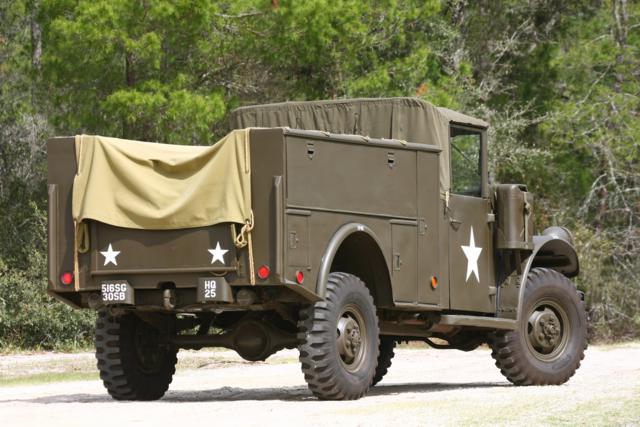
These trucks were designed to be used in the field as maintenance vehicles and were fitted with a utility body.
From 1957 to 1963, the Army asked Dodge to weld up 519 of these things, with this one springing off the line in 1961. They called ‘em the M201B1. Guys like Jim Branson, who owns this one, can tell you that it’s the same basic chassis as the M37 military truck of which many tens of thousands were made. The M201B1 was particularly modified for the twin mission of telephone line maintenance and roadside assistance for combat vehicles. That last part is what really makes this cool: it’s the Ultimate Worst Case Scenario Tonka.
What do we mean by that? Everything about this truck is designed to let you go take back Corregidor, or maybe liberate Dien Bien Phu. First, there’s the chassis. With a GVWR of 8,950 pounds, this ain’t no unibody. The suspension was designed right about the time that the Earth’s crust was cooling, and it will last just as long, with massive leaf springs all the way around, and correspondingly massive shocks.
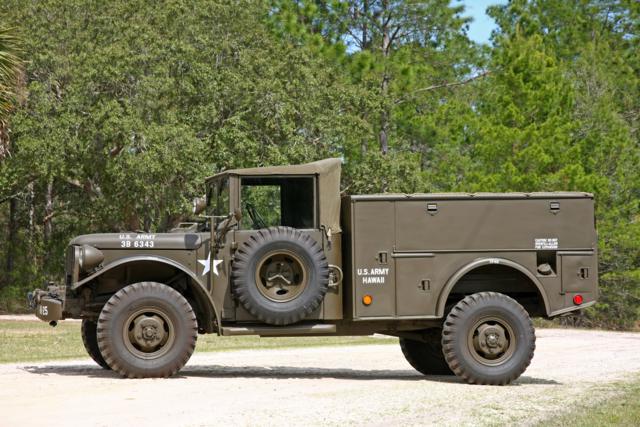
Forget your Hummer H3. If you really want to make a statement, take one of these to the country club. Jim initially earmarked 10 grand for the restoration. He was waaay off. The initial resto consumed 1400 hours, with many additional since then. Even so, it still came out less expensive than an H3—and much cooler, too.
Motivating this all is a cast-iron flathead T245 230 CID straight Six. It’s not a glamour motor, but it will go from Paraguay to Kazakhstan running on nothing but Old Spice and boot polish. It produces 78 HP, and it will be doing so long after cockroaches become the dominant species. The motor turns a Borg & Beck 10-inch clutch which splines around a big New Process 420 four-speed, which is tied to a massive two-speed transfer case. And in a ride like this, there ain’t no buttons to control the t-case. No, sir. There are levers. Big, honking, leverage-producing levers, and a whole lot of ‘em. As you can see there are a total of four things sticking out of the tranny hump. The leftmost one is the shifter for the four-speed. The second one is the parking brake, which functions by somehow messing with a power-take-off on the t-case. The rightmost two levers select the drive mode: 2 high, 4 low, 4 high. The recommended way to change the mode is to put it in neutral, come to a complete stop, randomly move all that stuff around for a while, then pop the clutch and see what happened.
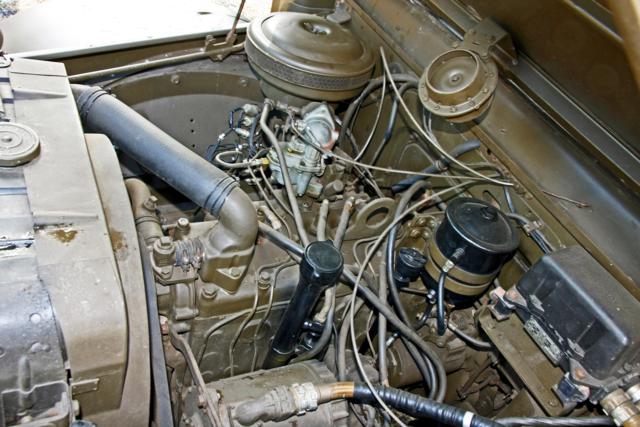
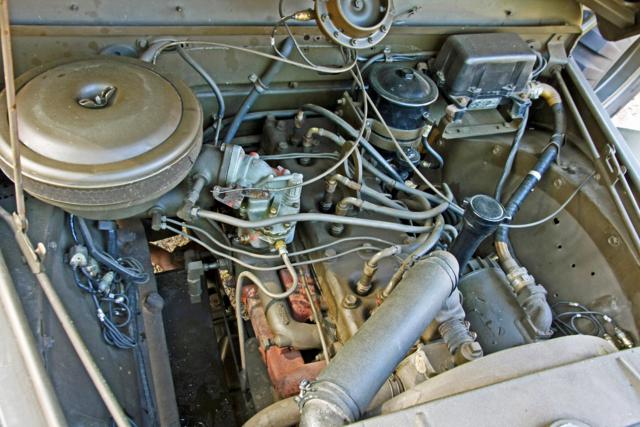
Powering the beast is Chrysler’s venerable straight Six cranking out a respectable 78 horsepower—enough to get the job done. Slap on the carb snorkel and don your scuba gear and you can drive with the fishes,
Once the torque sneaks out of the transfer case, it goes through Chrysler 9- inch diffs, at both front and rear. To make sure you can climb that hill, both diffs gear in at 5.83:1. That gives low range top speed of 28 and the high range a Jimmy-Carter-approved 55 mph. The tires are tall, skinny and knobby, and were specifically designed to be “unidirectional.” That isn’t in the performance sense that they should be mounted to only turn in one direction, but rather, the tracks they leave look the same in both directions, so that an enemy observing the tracks (at least while going straight) couldn’t tell which way you were headed. Gromer just put a set on his personal truck so the publisher can’t keep track of him.
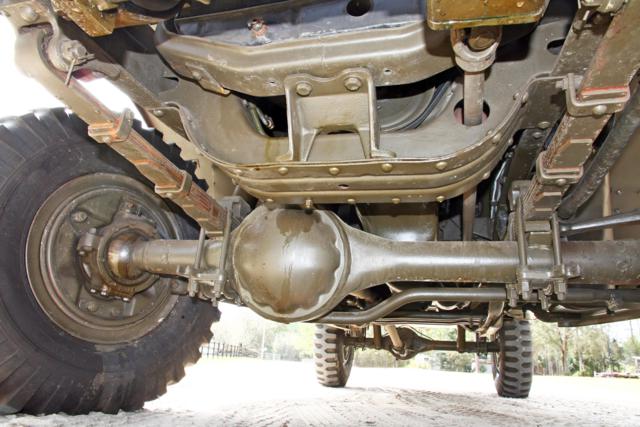
The chassis is built strong enough to receive the Ehrenberg stamp of approval for 100,000-mile real world pothole road duty, It’s the same setup as in the popular M37 trucks. Beefy 9-inch Chrysler diffs at either end spin 5.83 gears.
There aren’t any brakes. Or at least we don’t think so. If it ever had any, they would have been wildly inadequate drums. But that’s perfectly right, isn’t it? If you wanted to sit still, you’d still be at Fort Lewis, wouldn’t you? You didn’t put this thing on a ship and sail 4000 miles and get seasick and eat kimchi and suffer through soju and those penicillin shots and then drive all the way up the whole damn peninsula just to stop. We’ll stop when we run into the Pyongyang officer’s club. At least if it’s empty.
Then there’s the windscreens. If you want to put a quick burst of BAR fire onto a charging squad, just tip ‘em up like a casement window, and you’re in business. And if the problem is in the form of a bunch of strafing MiGs, just pop the latches at the far left and right, lay the whole windshield flat, throw back the canvas top, and you’re an instant anti-aircraft platform, all without slowing down. On the rest of the outside, there’re massive bumpers, and a huge, steel grille-guard. This is not some maggot-Land-Rover-shopping-cart deflector: this would let you drive through every obstacle between here and the Yalu River without slowing down. And if you run into awful terrain, you still aren’t slowing down, because you have a 7,500 pound Braden winch, and yet another lever to activate it.
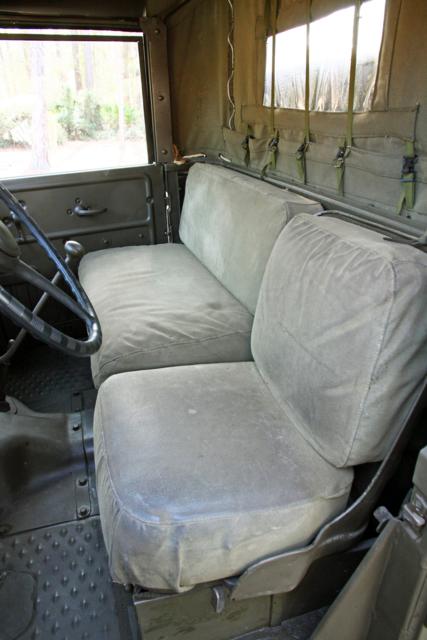
Jim saved a few bucks by passing on the leather interior, preferring to go with the less expensive bedsheet-style seat covers.
But all that isn’t the part that says you’re going to retake Chosin Reservoir all by yourself. The parts that do that are the signs. They remind you constantly. First, you didn’t procure this, the freakin’ Ordnance Corps did. Our old man was in the Ordnance Corp. Their unit patch is a flaming bomb. Perfect. Then there are signs telling you where to get your operator’s manual, your maintenance manual, and, better yet, your maintenance order. No stretching those oil change intervals. The key service data is held to the dash with four Phillips-heads. And moving up the scale is the light switch bank. The biggest lever in that set has, in big lettering, UNLOCK. Why? Because if your sorry ass accidentally hits the lights on a night mission, the Chinese forward observer is going to call in an artillery mission on you that would make Verdun look like a roman candle fight.
So, with all that, you sure as hell are going to make it to the Yalu. But what then? No problem. Slap on the issue snorkel kit and pull out the first plunger to the left of the instrument cluster. That affirmatively pressurizes the crankcase, to keep water out. Then drop your hand down to the T-handle right under that and yank it. That locks the throttle open, no matter if underwater obstacles try to stall you or knock your foot off the gas. No stalling, no water intrusion, and you’ll be up the north bank in no time.
Basic instrumentation tells you everything you need to know. Metal placards abound with warnings, instructions and how often to brush your teeth, Multitude of floor levers do everything but flush the toilet (that’s done by pulling a chain). No wimpy buttons to push here, just check out those macho levers on the dash. All that moveable hardware invites you to climb in and drive this thing.
All that is magnificent, but the best part of wheeling this thing around is the knowledge that something is about to blow up at any minute. Maybe it’s the enemy. Maybe it’s you. But something’s got to blow up, and the operator’s manual recognizes that. If nothing else blows up, the manual instructs you how to blow up your own truck. Well, at least if you have to leave it, so it won’t fall into enemy hands. And it’s not some lamo two-sentence directive: it goes for pages, covering destruction by demolition, by incendiary, and by gunfire. It even suggests combinations, along with very helpful hints like “The detonation of explosive charges should be delayed until the incendiary fires are well started. This will prevent the fires from being extinguished by the blast.”
The M201B1 Tonka goes anywhere, looks incredibly tough, and you get to blow it up. How cool is that? Simansky would have loved it.


